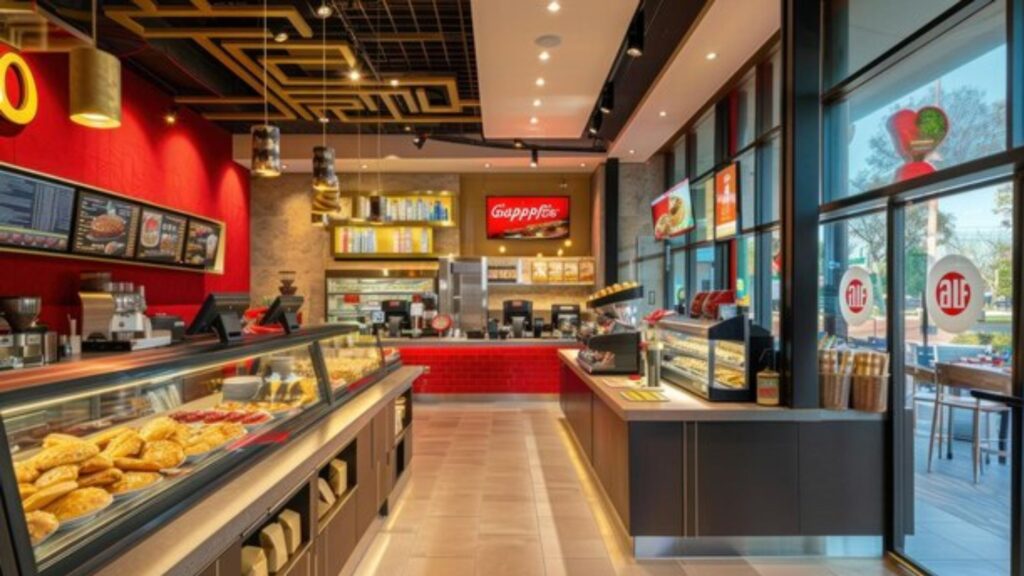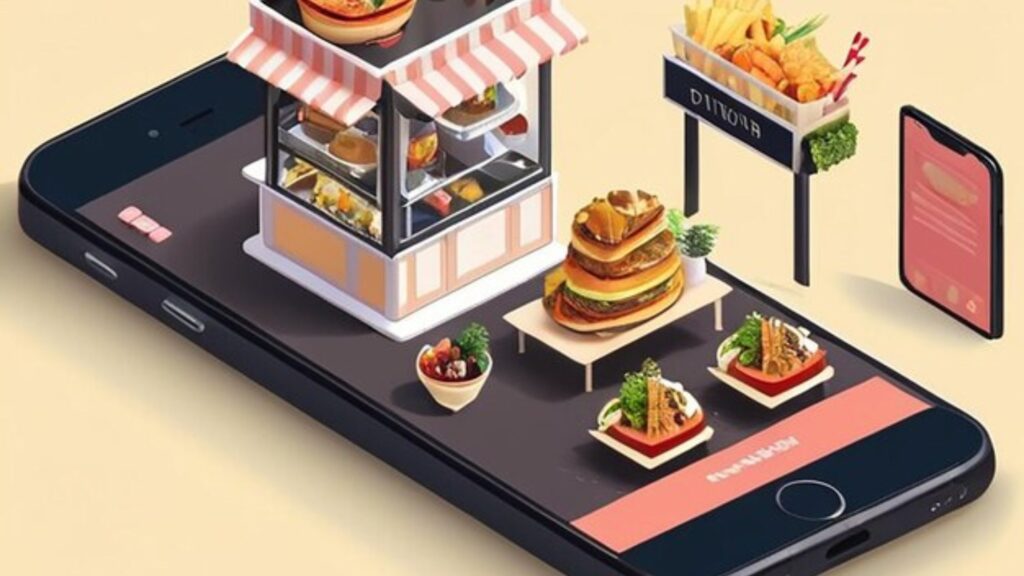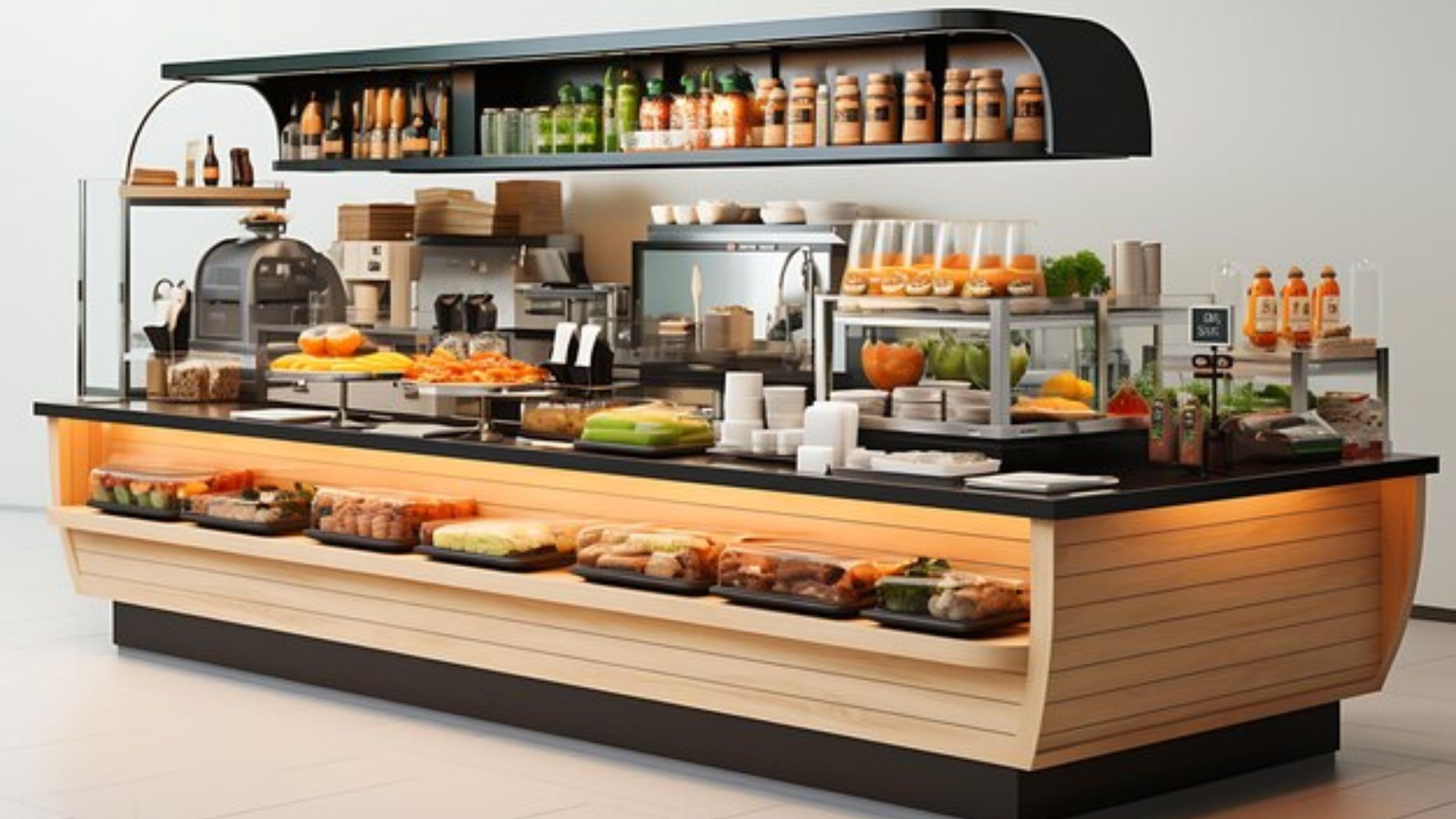Starting a Fast Food Store with low investment requires a strategic approach to maximize profitability and keep initial costs to a minimum. First, it is extremely important to conduct thorough research. It is essential to understand the dynamics of the fast food market, customer preferences, and competitors’ strategies.
This will help you identify gaps in the market and allow you to adapt your offerings to local demand. For example, if there is a shortage of a particular type of fast food in your area, you can adjust your offerings to fill that gap, giving you a competitive advantage.

Creating a comprehensive business plan is a crucial step in this process. Your business plan should clearly lay out your vision for the fast food store, including your special selling proposition and plan to stand out in a competitive market. Clearly define your target audience, including their demographics, shopping habits, and preferences.
Table of Contents
This information will guide your menu choices and marketing strategies. In addition, your business plan should include detailed financial forecasts, including startup costs, expected revenues, and timelines for profitability. This roadmap will not only help you stay focused on your goals but will also be helpful in attracting potential investors or lenders, indicating a well-thought-out plan.
1. Starting a Fast Food Business: Important Steps to Research and Planning
Research and planning are important first steps to starting a fast food business. First, study the fast food industry thoroughly so you understand its dynamics, trends, and challenges. This includes gathering data on market demand, popular menu items, and emerging trends in the industry. Analyzing your competitors is also essential. Find out who your competitors are, what they offer, and what their strengths and weaknesses are. This information will help you decide what makes your Fast Food Store business special and how you can effectively position yourself in the market.

Also, it’s important to identify and understand your target market. Determine who your potential customers are, including their demographics, preferences, and spending habits. This information will enable you to customize your menu, pricing, and marketing strategies to their needs and preferences. For example, if your research shows that there is a high demand for healthy fast food options, you might consider including such items on your menu.
Developing a comprehensive business plan is the next important step. This plan should clearly outline your business goals, including immediate and long-term objectives. It should include a description of your target audience, your strategies for attracting and retaining customers, and your financial forecasts. These forecasts should include startup costs, expected revenues, and estimates of profitability. A well-crafted business plan not only guides your decision-making process, but also helps you obtain funding from investors or lenders, providing a clear and accessible roadmap.
2. Selecting a suitable location for a Fast Food Store business
Instead, consider low-cost but strategic locations, such as small shopping centers, near educational institutions, or in high-density residential areas. These areas usually ensure regular foot traffic, which may include students, families, and residents, who may become your regular customers. A small, well-chosen location not only helps reduce rent costs, but also allows operations to be managed more efficiently. Thus, by choosing a location that offers the right balance of visibility and affordable pricing, you can ensure a steady stream of customers and keep overhead costs under control.

Choosing the right location is a crucial decision when starting a Fast Food Store business. A location that offers high foot traffic and good visibility should be chosen to attract customers. In high-traffic areas, your shop will be seen by more people, which can lead to increased sales. However, it is important to avoid overly expensive areas, as the high rent costs of such locations can put a strain on your budget and affect your profit margins.
3. Sources of Affordable Ingredients: Cost-Efficient Purchasing Methods from Local Suppliers
Finding a source of affordable ingredients is important for your Fast Food Store business, as it can effectively control your costs. Building relationships with local suppliers can be a good move. When you partner with local suppliers, you can get better prices and receive ingredients quickly and reliably. Additionally, local suppliers are often more flexible and may be willing to accommodate special requests, which can make your operations easier.

Consider bulk buying for commonly used items. Through bulk buying, you can take advantage of discounts by purchasing large quantities of ingredients, which can reduce overall costs. This way you can not only reduce expenses but also ensure the availability of ingredients, so there will be no disruptions in your supply chain.
It is also important to keep a close eye on inventory. This helps you reduce material waste and control your expenses. By reviewing your inventory periodically, you can identify any unnecessary waste and take measures to prevent it. Additionally, you can also buy ingredients from the local market, allowing you to get fresher and possibly cheaper options, while also supporting the local economy. Thus, with the right supplier and the right strategies, you can manage costs effectively.
4.Investing in Efficient Appliances: Ways to Buy Reliable and Cost-Efficient Kitchen Appliances
Investing in efficient kitchen equipment is extremely important to the success of a Fast Food Store business, as it directly affects the efficiency and overall cost of operations. When purchasing equipment, focus on essential items that are reliable and cost-efficient. Key equipment includes fryers, grills, and refrigerators. Choosing high-quality and durable equipment can ensure that performance remains consistent and there is a low chance of malfunctions, which can hinder business operations.

Consider second-hand options for some essential items. Buying used equipment can substantially reduce your initial investment costs while still providing the functionality you need. However, thoroughly inspect second-hand equipment before purchasing it to ensure it is in good condition. Ensure that the equipment has been well-maintained and meets the necessary health and safety standards. This precaution helps prevent potential problems that may arise from poorly functioning equipment, thereby avoiding costly repairs or replacements in the future.
Additionally, ensure that all equipment is compliant with health and safety regulations. Properly maintained equipment not only complies with legal standards but also ensures the safety and quality of the food you serve. Investing in equipment that meets health and safety standards helps avoid health violations and potential fines, contributing to the smooth and safe operation of your Fast Food Store business. Thus, with the right selection and maintenance, you can increase the efficiency of your kitchen equipment, manage costs effectively, and maintain high standards.
5. Economical Marketing Strategies for Fast Food Stores: Using Social Media and Local Advertising”
Marketing is a key element to a fast food store’s success, and using affordable strategies can help you promote your Fast Food Store business without spending a lot. First, use social media platforms, which are a powerful and inexpensive way to reach a large audience. Create content that resonates with your target market, such as attractive photos of your food, behind-the-scenes glimpses of the kitchen, and customer reviews. Posting regular updates and interacting with your followers can strengthen your online presence and build a loyal customer base.

Promotions or discounts through social media can also be helpful in attracting new customers and encouraging recurring business. Special offers, limited-time offers, and special discounts can generate leads and attract customers to your store. Feature these promotions prominently in your posts and ads, and consider ads that target particular demographics or geographic areas that may be interested in your offerings.
In addition to digital marketing, local advertising can also be an effective way to increase foot traffic to your store. Distribute flyers in high-traffic areas, such as shopping centers, residential neighborhoods, and near educational institutions. Participating in or sponsoring community events can also increase your visibility and exposure to potential customers in your area. These grassroots marketing efforts can help increase brand awareness and attract local customers, who may become regular customers. By combining social media strategies and local advertising, you can create a comprehensive marketing plan that effectively promotes your fast food store and boosts business growth.
6. How to start a small to medium fast food store with an investment of ₹90,000 to ₹1,00,000
If you are looking to invest between ₹90,000 and ₹1,00,000 to start a small to medium-sized fast food store, you need to plan your budget well. At first, the rent and contracts for the store space will be your main expenses. Choosing a smaller location in a high-traffic area or a less expensive neighborhood can help you keep these costs in check. Typically, the initial rent and deposit can cost ₹30,000 to ₹50,000, which can vary depending on your location and size.
It is also important to pay attention to the store’s renovation and interiors. With a budget of ₹20,000 to ₹30,000, you can get the place painted, do basic furniture and decor that suits your brand. Keeping the design simple and functional can help you stay within this budget.
Investing in kitchen equipment is also important. For a small operation, you can get by with basic equipment such as fryers, grills, and refrigerators for between ₹30,000 and ₹40,000 if you choose cost-efficient or second-hand options. This investment ensures you have the equipment you need to efficiently prepare your menu items.
Set a budget of ₹10,000 to ₹20,000 for initial inventory, which includes ingredients and supplies. Establishing relationships with local suppliers will help you get the best prices and manage inventory effectively.
Additionally, it is important to set a budget of ₹10,000 to ₹20,000 for legal requirements, such as licenses and permits, so that your business can comply with health and safety norms.
Finally, setting a budget of ₹5,000 to ₹10,000 for marketing and promotions will help build initial awareness about your store. Simple strategies like local advertising and social media promotion can be effective within this budget.
With the right planning and cost management, it is possible to start a small to medium-sized fast food store with an investment of ₹90,000 to ₹1,00,000. Balancing expenses and focusing on the necessary investments will create a strong foundation for your business.
7. Estimating potential profits and earnings from a small to medium fast food store
How much you can earn from a small to medium-sized fast food store depends on various factors, such as location, menu prices, efficiency of operations, and customer traffic. Generally, a well-managed fast food store has a profit margin of around 10% to 20% of total sales.
For example, if your store sells ₹3,00,000 a month, you can earn a profit of ₹30,000 to ₹60,000 if the profit margin is 10% to 20%. This is a general estimate, and actual profits may vary depending on your specific business conditions, such as overhead costs, employee salaries, and inventory management.
To increase profits, focus on cost control, efficient operations, and strategic pricing. Regularly reviewing your financial figures and adjusting strategies based on performance can help you optimize your earnings and achieve long-term success in the fast food industry.
Conclusion
Starting a Fast Food Store with low investment requires a well-thought-out and strategic approach. Thorough research and a solid business plan lay the groundwork for your successful launch and growth. Understanding market dynamics, customer preferences, and competition will help you set the right direction for your store.
A clear business plan clarifies your vision, target audience, and financial forecasts, which helps you refine your strategies and attract investors. Thus, with the right plan and strategy, you can set up a successful fast food store despite limited resources.
If u want to Watch the Video You can visit to our You tube Businovations Channel and watch the video……
Click the link to read the Recent Posts….
Starting a Umbrella business with Low Investment (140)

